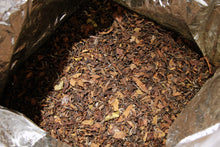
With the popularity of the white tea market in recent years, the concept of "wilderness tea" has appeared more and more in front of people's eyes, but compared with ordinary tea, wild tea needs more time to let it grow undisturbed in the wild In recent years, the output has become less and less. Today, I will bring you a 2015 Wilderness Shoumei. The sample is 5 grams for free sharing. The real wilderness tea is unattended and natural wild tea. Therefore, it grows slowly and cannot be harvested frequently, so as not to damage its quality. Taking out this dry tea from the Wilderness Shoumei, you can occasionally see tiny insect eyes on its leaves, and this is exactly what this tea is ecologically organic, pure and pure. Proof of wild growth and no manual intervention, the raw materials in the wild make the finished tea leaves a wild rhythm, richer in inner quality, richer in taste, more layered in aroma, and more conducive to later transformation. This is a suitable tea for various brews. The brewing method of tea, whether it is brewed, simmered or boiled in a pot, can reflect a completely different wonderful flavor. The dry tea is relatively broken, the dryness is high, the leaves are colorful, and the boiling water is injected during brewing, and there are obvious plums. When the fragrance is scattered, the tea soup is orange-yellow and transparent, sweet and clean, smooth and fresh, with a cool feeling, and the sweetness lasts for a long time. The hidden medicinal aroma is contained in it, which is mellow and rich and has a long taste. Therefore, it is recommended to brew it first and then brew it in a pot. The rich content of this tea is enough to allow you to use different brewing methods to enjoy its different flavor performance.
Brewing method: brewing, simmering, or pot boiling
Tea Maker: Brewing Method-Gaiwan (150ml)
Amount of tea: 5g
Water: Purified water
Brewing: The first wash of tea. After that, the soup time is controlled according to personal taste. The lower the water temperature is, the sweeter it is, and the higher the water temperature is more mellow. After the tea taste is reduced, it can be brewed in a simmering pot or boiled in a pot.





















